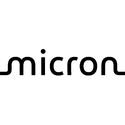Hyper Light Breaker Buried Below Update Addresses Several Major Complaints As Dev Works to Salvage Roguelike
Hyper Light Breaker received some significant criticism immediately after launch, largely for clunky combat, insubstantial progression, and a lack of world-building. Some community feedback is to be expected, since Hyper Light Breaker is still in Steam Early Access, but the community backlash was unexpected, given the success that the game's predecessor, Hyper Light Drifter, garnered. The first major content update aimed at addressing much of the criticism has just dropped on Steam, and many of the changes seem to be welcome by the community.
Some of the biggest changes to Hyper Light Breaker introduced in the Buried Below update include changes to character progression, weapon synergies, and the overall gameplay loop itself. Heart Machine also introduced a new playable character, Rondo, two new melee weapons, a new mini boss—a Crown called Maw—with its own player perks, and new areas for players to explore. Heart Machine also says it has streamlined the game's onboarding process, and that the changes to the game should make the game easier to get into for new players but more difficult to master. In terms of the gameplay loop, the new update reduces player lives from four per run to one per run, making things much less forgiving, however, players will also now always spawn in one of two locations, making the start of a new run more predictable. There are also a number of improvements to the enemy AI that should make encounters and battles somewhat more challenging and interesting. Players are also locked to a single character and companion for the duration of each run, which is a substantial change from the previous system which allowed players to switch characters and Sycoms mid-run. There are a number of other balance patches and new additions, which you can read about in the full patch notes below. Overall, judging from the comments in the Steam Community discussion under the update patch notes, players seem to be tentatively excited about the majority of the changes to the gameplay loop, although some concerns remain.
Some of the biggest changes to Hyper Light Breaker introduced in the Buried Below update include changes to character progression, weapon synergies, and the overall gameplay loop itself. Heart Machine also introduced a new playable character, Rondo, two new melee weapons, a new mini boss—a Crown called Maw—with its own player perks, and new areas for players to explore. Heart Machine also says it has streamlined the game's onboarding process, and that the changes to the game should make the game easier to get into for new players but more difficult to master. In terms of the gameplay loop, the new update reduces player lives from four per run to one per run, making things much less forgiving, however, players will also now always spawn in one of two locations, making the start of a new run more predictable. There are also a number of improvements to the enemy AI that should make encounters and battles somewhat more challenging and interesting. Players are also locked to a single character and companion for the duration of each run, which is a substantial change from the previous system which allowed players to switch characters and Sycoms mid-run. There are a number of other balance patches and new additions, which you can read about in the full patch notes below. Overall, judging from the comments in the Steam Community discussion under the update patch notes, players seem to be tentatively excited about the majority of the changes to the gameplay loop, although some concerns remain.
































































